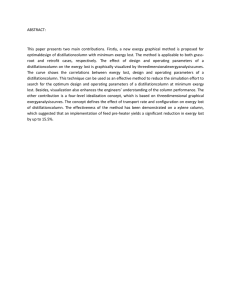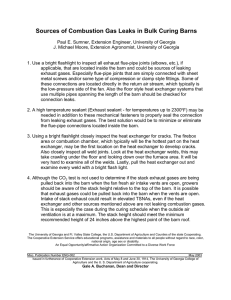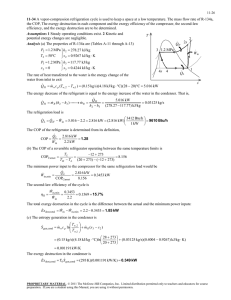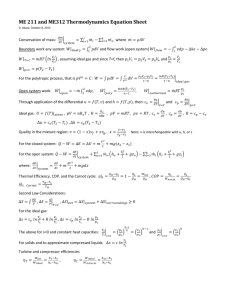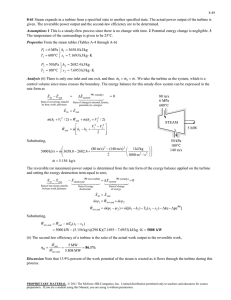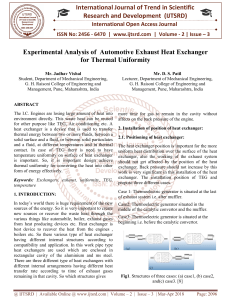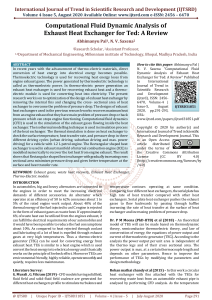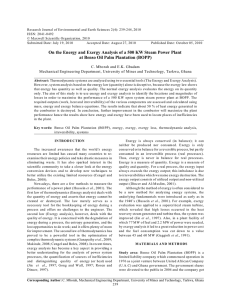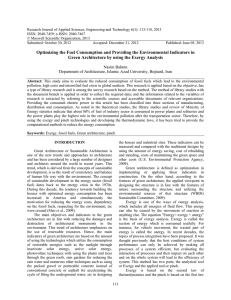exchanger. The rate at which the steam is obtained, the... 8-101
advertisement
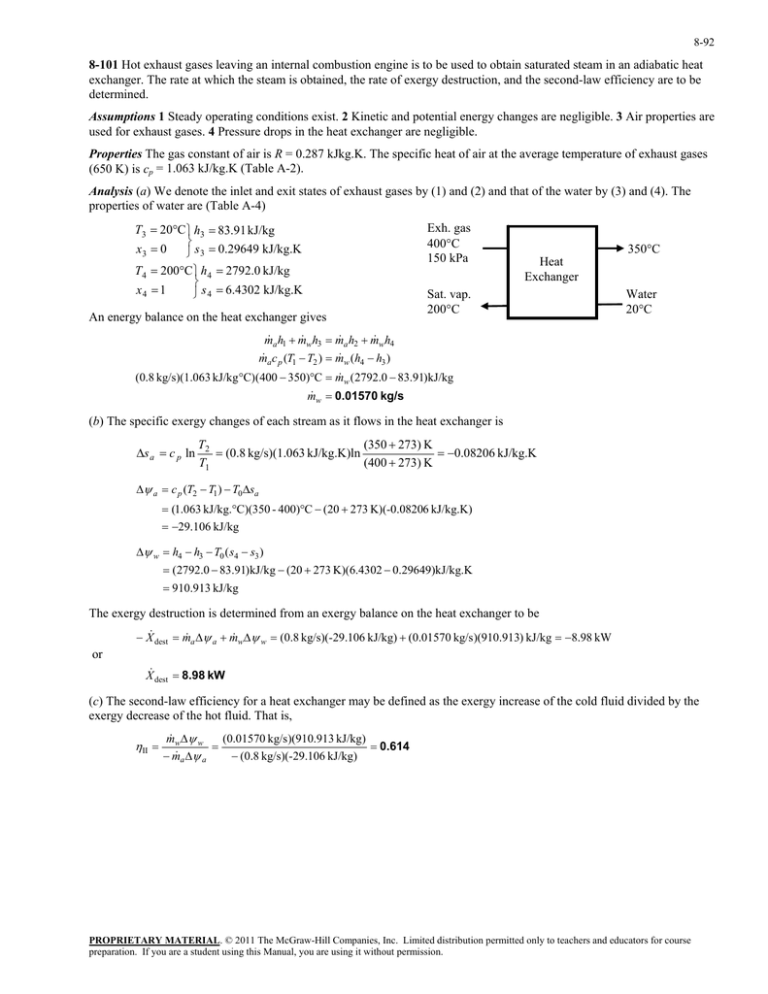
8-92 8-101 Hot exhaust gases leaving an internal combustion engine is to be used to obtain saturated steam in an adiabatic heat exchanger. The rate at which the steam is obtained, the rate of exergy destruction, and the second-law efficiency are to be determined. Assumptions 1 Steady operating conditions exist. 2 Kinetic and potential energy changes are negligible. 3 Air properties are used for exhaust gases. 4 Pressure drops in the heat exchanger are negligible. Properties The gas constant of air is R = 0.287 kJkg.K. The specific heat of air at the average temperature of exhaust gases (650 K) is cp = 1.063 kJ/kg.K (Table A-2). Analysis (a) We denote the inlet and exit states of exhaust gases by (1) and (2) and that of the water by (3) and (4). The properties of water are (Table A-4) T3 20C h3 83.91 kJ/kg x3 0 s 3 0.29649 kJ/kg.K T4 200C h4 2792.0 kJ/kg x4 1 s 4 6.4302 kJ/kg.K An energy balance on the heat exchanger gives Exh. gas 400C 150 kPa 350C Heat Exchanger Sat. vap. 200C Water 20C m a h1 m wh3 m a h2 m wh4 ma c p (T1 T2 ) m w (h4 h3 ) (0.8 kg/s)(1.063 kJ/kgC)(400 350)C m w (2792.0 83.91)kJ/kg m w 0.01570 kg/s (b) The specific exergy changes of each stream as it flows in the heat exchanger is s a c p ln T2 (350 273) K (0.8 kg/s)(1.063 kJ/kg.K)ln 0.08206 kJ/kg.K T1 (400 273) K a c p (T2 T1 ) T0 sa (1.063 kJ/kg.C)(350 - 400)C (20 273 K)(-0.08206 kJ/kg.K) 29.106 kJ/kg w h4 h3 T0 ( s4 s3 ) (2792.0 83.91)kJ/kg (20 273 K)(6.4302 0.29649)kJ/kg.K 910.913 kJ/kg The exergy destruction is determined from an exergy balance on the heat exchanger to be X dest m a a m w w (0.8 kg/s)(-29.106 kJ/kg) (0.01570 kg/s)(910.913) kJ/kg 8.98 kW or X dest 8.98 kW (c) The second-law efficiency for a heat exchanger may be defined as the exergy increase of the cold fluid divided by the exergy decrease of the hot fluid. That is, II (0.01570 kg/s)(910.913 kJ/kg) m w w 0.614 m a a (0.8 kg/s)(-29.106 kJ/kg) PROPRIETARY MATERIAL. © 2011 The McGraw-Hill Companies, Inc. Limited distribution permitted only to teachers and educators for course preparation. If you are a student using this Manual, you are using it without permission.
